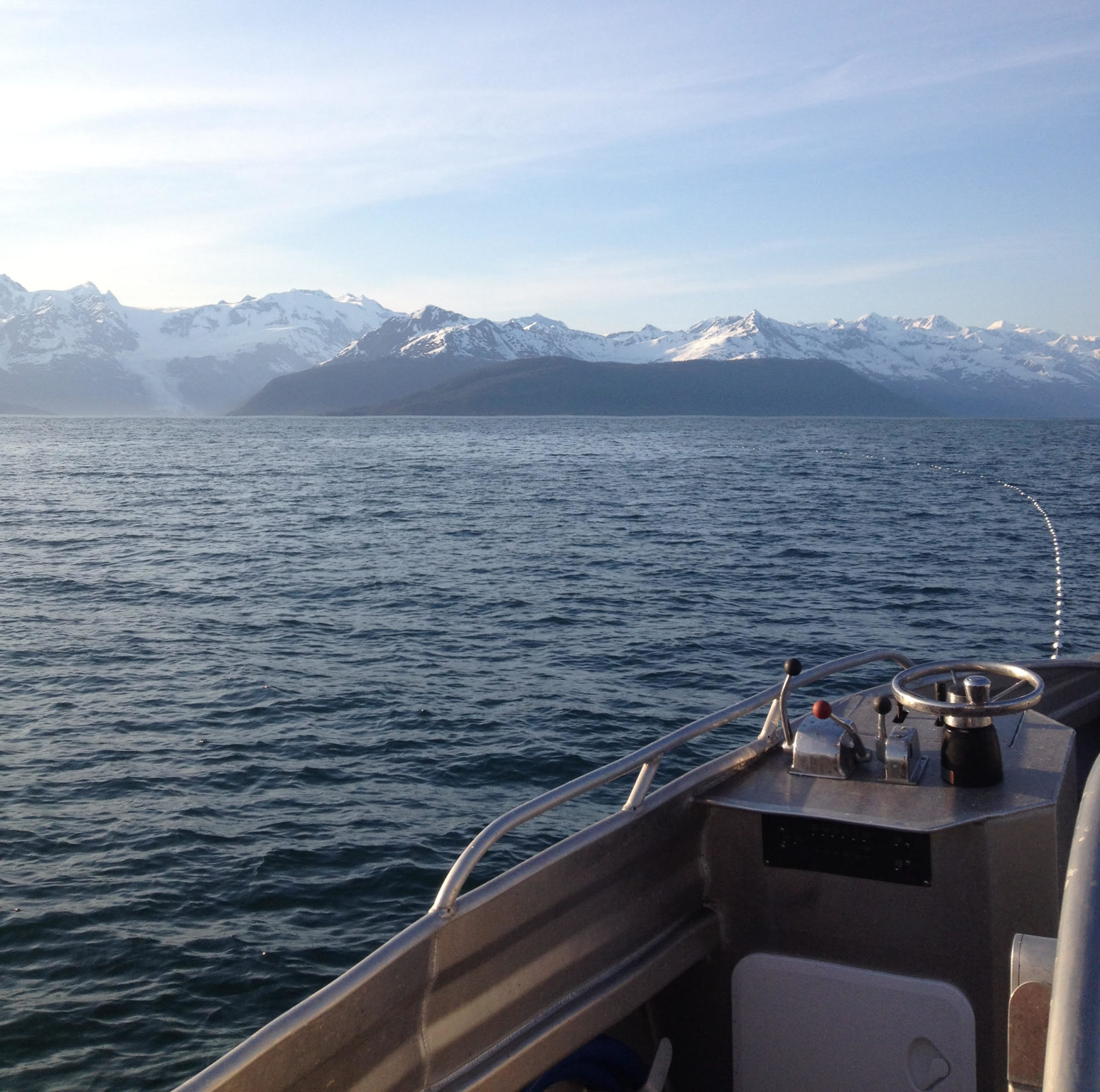The Prince William Sound salmon fishery is broken up into multiple districts and types of fishing methods. The fisheries are limited entry, meaning that a person must own a permit card in order to harvest and sell their fish.
My family own a drift gillnet permit card. This style of fishing involves a gillnet 900 ft in length that is not connected to the shoreline. The other type of gillnet fishing is set gillnet fishing and requires a person to own set gillnet permit. This type of gillnetting uses the shore to anchor a net in place, essentially the opposite of drift gillnetting.
Seining is the other main method used. It is extremely effective and lucrative, but the cost of owning an operation is much higher than that of a gillnet operation. Also, seining often takes place in different parts of Prince William Sound.
Focusing on drift gillnetting, there are three main districts fished and one that alternates between drift gillnet and seining, depending on how many fish each fleet catches. This is done in order to keep the flow of money balanced between the fleets. Between these districts, all five species of Pacific salmon are harvested.
This map depicts all of the fishing districts in Prince William Sound. Below are the ones that are frequently used by drift gillnetters.
Copper River District:
Location: Southeastern Prince William Sound and Northeastern Gulf of Alaska
Types of Salmon: Sockeye, Chinook (also caught: Chum, Coho)
Run Timing: Mid May-July
The Copper River district is the backbone of our fishery. Famous for its rich and flavorful wild Copper River sockeye, this was the original fishery that provided year after year for fisherman. There is no higher quality salmon in the world than Copper River Salmon
Eshamy District:
Location: Western Prince WIlliam Sound
Types of Salmon: Sockeye, Pink (also caught: Chum, Coho, Chinook)
Run Timimg: June & July
The Eshamy District is tricky. Located in weather worn western Prince William Sound, the rockpiles and shoreline are difficult to navigate. However, it can pay off. 3,000 lbs sets of sockeye salmon are common, giving a person a quick $6,000 to start the day. These fish are raised and imprinted in a hatchery before being released into the ocean, returning four years later for harvest. This district is often used to start, as once the fish are caught, the fishing may not be good until the next fishing period. It is a place to hit a home run, but is also very easy to strike out.
Coghill District:
Location: Northwestern Prince William Sound
Types of Salmon: Chum, Sockeye, Pink, Coho (also caught: Chinook)
Run Timing: June & July: Chum/Sockeye. July-September: Pink/Coho
The Coghill district is known to be steady. It started as a run of wild sockeye to the coghill river, but later a hatchery was put in to accomdate chum salmon as well. It seems year after year to be a way to exchange hard work for a good pay check. Not usually exciting, but there are some times when 20,000 lbs of salmon can be caught. If nothing else is working, the Coghill district can usually provide something to work on.
Montague District:
Location: Montague Island
Types of Salmon: Chum (also caught: Sockeye, Pink, Coho, Chinook)
Run Timing: June & July
This district alternates between drift gillnet and seining depending on how much money each gear type is making. We have never fished here and I know very little about it. Often it is not as productive as other districts and could be shutting down soon.













